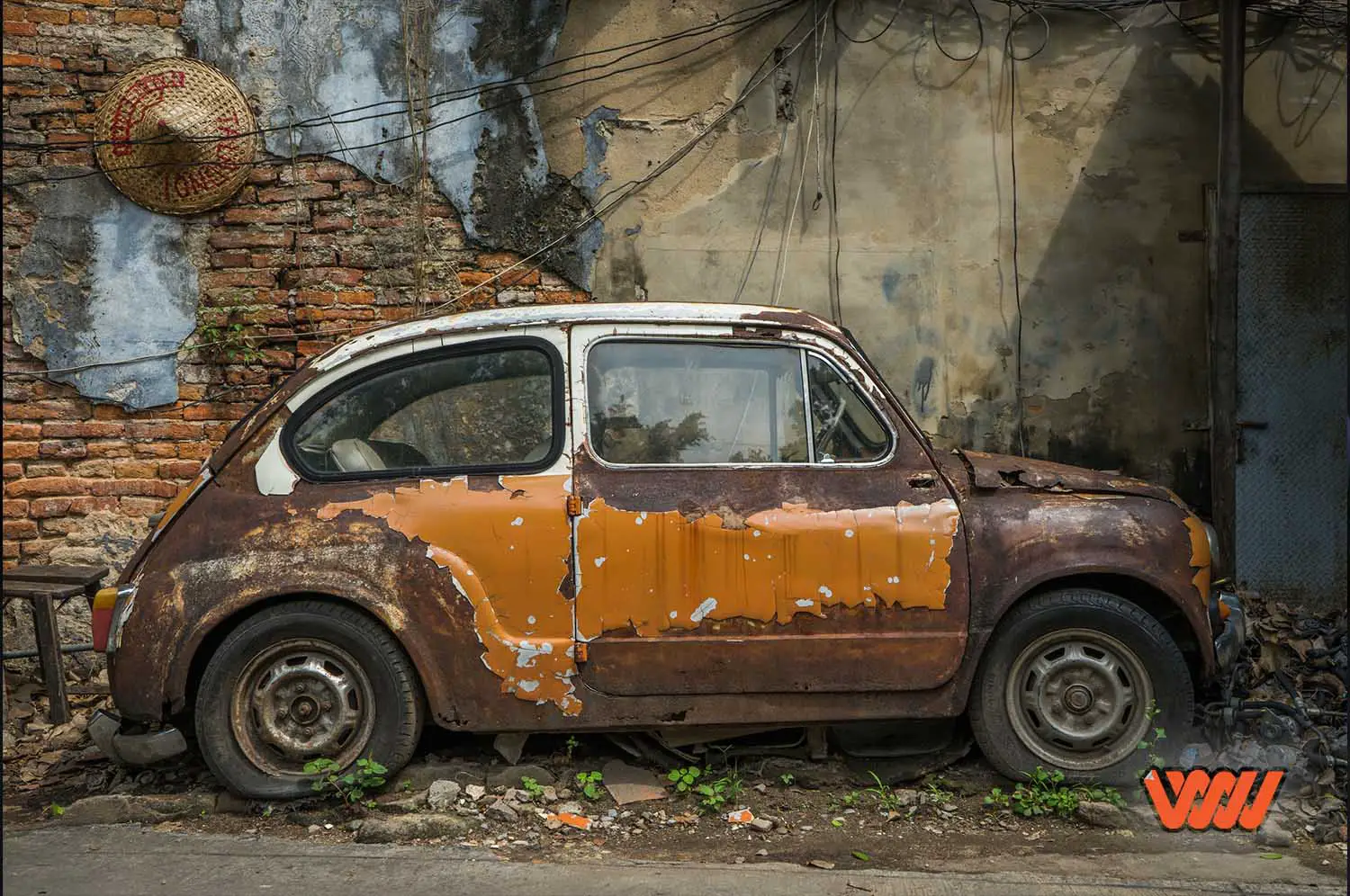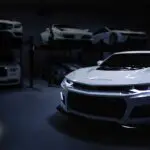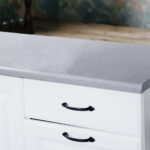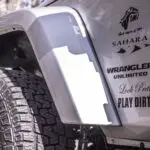We all want to maintain our vehicle’s glossy, pristine appearance for as long as possible. However, as you have probably realized, keeping your car looking new is a challenge because of the relentless assault by the elements. One solution to protect your vehicle against dings and scratches is to vinyl wrap your car, but can you wrap over rust?
You should not vinyl wrap over rust. It’s best to address the rust before proceeding because wrapping over rust traps moisture within, which accelerates the spread of rust. Ultimately, you may end up incurring high costs to repair the damage.
In this article, I will discuss in detail vital questions related to this topic, including whether vinyl wrap prevents rust and if it covers scratches. I will also discuss some rust preventative strategies to avoid further damage to your car.
What Is Car Wrapping?
Car wrapping is the process of applying singular or multiple vinyl layers to your car’s exterior. This process aims to add a layer of protection to your vehicle against debris, salts, and the elements or to improve your car’s aesthetic appeal.
Wrapping has both aesthetic and protective aspects to it. As elaborated by the experts at AutoTrader, car wrapping is an option for car owners to change the appearance of their car without having to respray the car or add a layer of paint.
Accordingly, these vinyl layers arrive in different colors as well as designs. Therefore, you can easily give your car a glossy or matte finish by adding these vinyl layers.
As a result, wrapping provides an alternative to repainting your car, especially if you are looking for a less intensive option to refresh your car’s outlook.
This vinyl layer will also double as a defense against abrasions and UV damage, protecting your car from the elements.
Will Vinyl Wrap Cover Rust?
Vinyl wrap will cover rust, but it is not advisable because the adhesive on the wrap will not adhere to the rusted area for long. The vinyl wrap will loosen up, leading to air bubbles and moisture accumulation, which will accelerate the rusting process.
In addition to further damaging your car’s exterior, applying wrap on a rusted area also increases the risk of tearing.
If you are considering wrapping your car as a quick fix to conceal any rusted areas, I recommend first eliminating the rust before proceeding. As TKO Graphix explains, the vinyl wrap will adhere to any foreign matter on your car’s exterior.
Any foreign matter, including but not limited to dust particles, rust, and debris, will compromise the wrap. Additionally, when the wrap adheres to this foreign matter, it creates separation between the wrap itself and your car’s surface.
If your car has some rust on it, I following the following simple steps before applying a vinyl wrap:
- Sand the affected area: The first step to removing rust is removing the rust with sandpaper. If your car is heavily rusted, use heavy-duty sandpaper with a grit of 40 or above. However, remember that heavy-duty sandpaper may leave light scratches on your vehicle.
- Apply primer on the sanded areas: Primer is a coating that helps defend the sanded area against further damage. It will also enhance the adhesion of your vinyl wrap to your car’s surface.
- Introduce your vinyl wrap: Place the vinyl sheets on the target area, allowing ample time for the primer to dry up first. The vinyl sheet will adhere to the surface of your car, which will go a long way in ensuring durability while keeping corrosion at bay.
If the rust is extensive, I recommend seeking assistance from a professional experienced in repairing automobile corrosion.
What if I Have Already Wrapped Over Rust?
If you have already added a vinyl wrap to a rusted surface, you should remove the vinyl wrap, repair the rusted areas, and then re-wrap your car. This ensures that no further damage is done to your car’s exterior.
The good news is that it is straightforward to remove a vinyl wrap, and you don’t have to incur additional costs from hiring a professional.
You do not need any specialized tools either. You can use your hands. This video provides simple guidelines on how you can remove the vinyl wrap from your car.
Vinyl Wrapping Your Car at Home
Wrapping your car is a relatively simple procedure that you can do yourself. Unlike multi-layer paint jobs, you can give your car a new look in a matter of minutes. What Is Vinyl recommends following these simple steps:
- Determine your working area: If you are wrapping your car at home, it is crucial to determine your work area. Ideally, you want a site free of dust and debris and with a comfortable temperature. I recommend doing this indoors, where you can control these aspects.
- Determine and prepare your application area: Before wrapping, remove any imperfections on the setup area. Ideally, you should ensure that the region is as smooth as possible to prevent tearing by repairing any dents and scratches.
- Clean your car and working area: It’s essential to keep your work area clean to limit influence from dirt and dust. Additionally, wash your vehicle to eliminate any debris and dirt particles.
- Measure the application area: Take measurements of the application area to determine the correct dimensions. Once you’ve done this, measure the vinyl sheet and cut it according to the area’s measurements.
- Apply the vinyl sheets on your car: In this step, remove the backing and stretch the vinyl sheets on your car, starting with the smaller sections and working your way to the larger sections. I recommend asking another person to help you do this. A helping hand can minimize wrinkles and other imperfections.
- Remove air bubbles: Use a heat gun to eliminate air bubbles and wrinkles. I recommend using the SEEKONE Heat Gun (available on Amazon) for this process. This tool comes at a reasonable price, and allows you to adjust its temperature according to your needs.
- Final Touches: Use a knifeless cutting tape such as the 3M Finish Line Knifeless Tape (available on Amazon) to create neat touches for the seams. This tape won’t damage your vehicle’s finish, and is translucent to make the positioning process simple. You should trim the edges carefully once you’ve set all of them.
- Cleaning after wrapping: Use vinyl-safe wax or a pressure washer to remove any spots or dirt on the vinyl wrap. This will give you that glossy, aesthetic look.
For more guidance on doing this process at home, I recommend watching this video.
Will Vinyl Wrap Prevent Rust?
Vinyl wrap can help prevent rust on your car. However, the vinyl wrap will only protect your car’s exterior in the areas it is applied. It will not cover the regions underneath. This is a crucial point to note because your car’s underside faces a higher risk of corrosion than the exterior.
Technically, a vinyl wrap can help prevent rust because it safeguards your car’s exterior against blemishes and rust caused by salt erosion. This comes in handy, especially in states which feature heavy snow during the cold season, such as Colorado, Pennsylvania, and Washington DC.
The vinyl wrap can protect your car against rust because it serves as a barrier between your vehicle’s surface and the elements. Remember, exposure to elements such as rain and snow accelerates rust formation. By acting as a barrier, it prevents these elements from penetrating the surface.
However, there is a catch; there are other vulnerable areas that a vinyl wrap will not protect and from where rust can spread to other parts of your car. These include the following:
The Underside of Your Car Is Prone to Rust
Your vehicle’s underside or undercarriage is highly susceptible to rust. This is because this area of your car will remain wetter for longer during snow or rains, primarily because, unlike the exterior, the sun rays do not reach the undercarriage.
Over time, this wetness accelerates corrosion on this metallic underside.
Additionally, the salt spread on the roads during winter can negatively impact the metallic components underneath your car. If these areas are washed regularly, and early signs of rust are arrested in advance, you can prevent rust from forming in the first place.
The Engine Chamber Is Easily Corroded
Water seepage can potentially damage your engine bay and subject its components to rust. As experts at SAE International elaborate, the engine chamber is generally at high risk for corrosion because of the action between sulfur from oils and fuels and water that seeps into the engine.
Like the undercarriage, this corrosion is prevalent during winter seasons. It happens when water condenses inside critical engine components such as the crankcase and engine cylinders.
Once rust develops on these vulnerable areas of your car, it can quickly spread to the car’s exterior.
If you are worried about rust, vinyl wrapping your car is not sufficient to completely prevent rust because it cannot protect your car’s undercarriage.
I recommend combining vinyl wrapping with regular washing, waxing, and sealing your car’s underside to remove corrosive substances such as road salt.
Will Vinyl Wrap Cover Scratches?
A vinyl wrap may cover minor scratches on your car, but you should repair more significant scratches before wrapping your car. If scratches are deep enough, a vinyl wrap will make them more noticeable.
A common misconception among car owners is that the vinyl wrap will cover any scratches on your car. Additionally, some car owners are reluctant to repair these scratches beforehand in an effort to save on repair costs. However, this presents a significant challenge.
The challenge of covering over scratches is that if these scratches are deep enough, adding a vinyl wrap may accentuate the blemishes. Vinyl wrap adheres tightly to your car’s surface, which means that any contours or chips will become more prominent after wrapping.
A general rule of thumb is that if you can feel these chips and scratches while running your hand over your car, you need to repair these scratches before proceeding. If you cannot feel them, they are likely just minor blemishes that the vinyl wrap can easily cover.
If you’re uncertain, it is always advisable to err on the side of caution to prevent wrapping errors. Accordingly, you should reach out to a reputable car wrap professional who will be able to advise you on whether you need to repair the scratches or not.
Other Rust Preventatives
Aside from wrapping, there are other alternatives to prevent rust on your car. I’ll discuss some of these options below.
Regular Washing Minimizes Corrosion
By regularly washing your car, you can help minimize road salt accumulation on the exterior or underside of your vehicle. As previously explained, salt is one of the leading causes of automobile corrosion.
I recommend washing your car at least once every week, especially during winter when there is a ton of salt on the roads.
Additionally, suppose you already have a protective coating on your car. In that case, regular washing will help renew this coating, which will defend your vehicle against rust-causing elements.
Waxing Repels Moisture and Prevents Rust
You should wax your car at least twice every year. Waxing adds a protective layer to your car’s surface that repels moisture that would otherwise accelerate rust formation. A good example of car wax is the AMP Premium Car Hybrid Topper (available on Amazon). This spray gives your car a sleek look and is extremely easy to use.
Not only will waxing safeguard your car against rust, it will also give it a glossy, clean look.
Seal Your Car’s Undercarriage
As previously stated, your car’s underside is one of the areas most susceptible to corrosion. To protect this part of your car, you should use a sealing compound to prevent corrosion. You can either spray the underside, or brush it using a sealing compound.
This approach is ideal as a preventive measure. Remember, if the rust is already extensive, a sealant may not be able to prevent it from spreading.
Consider Applying a Ceramic Coating Instead of Wax
A ceramic coating is a liquid polymer that serves as an alternative to waxing. You can apply this coating to your car to prevent moisture accumulation associated with rust formation.
The main advantage of a ceramic coating is that you can apply it once every three years, unlike wax.
Anti-Rust Spray Works In a Pinch
Applying some anti-rust spray on vulnerable areas is crucial to arresting rust before it spreads to other parts of the car. You should ensure that the application area is clean and dry for best results. This option is ideal for those who cannot afford ceramic coating or waxing.
Anti-rust sprays such as the Rust-Oleum Rust Inhibitor (available on Amazon) can protect your car from rust for up to one year. This spray comes at a great price, and leaves a durable, glossy finish on the areas sprayed.
Conclusion
A vinyl wrap can protect your car’s exterior against rust. However, you should remove rust from the surface before applying a vinyl wrap. Additionally, vinyl wrap can cover minor scratches but may further accentuate prominent ones.
You can also protect your car against rust-through waxing, coating, sealing, regular washing, and using an anti-rust spray.
Overall, the vinyl coating is an excellent option to protect your car while enhancing its appearance.
Photo altered by simplelifesaver.com | Photo attribution: Andre Mouton






